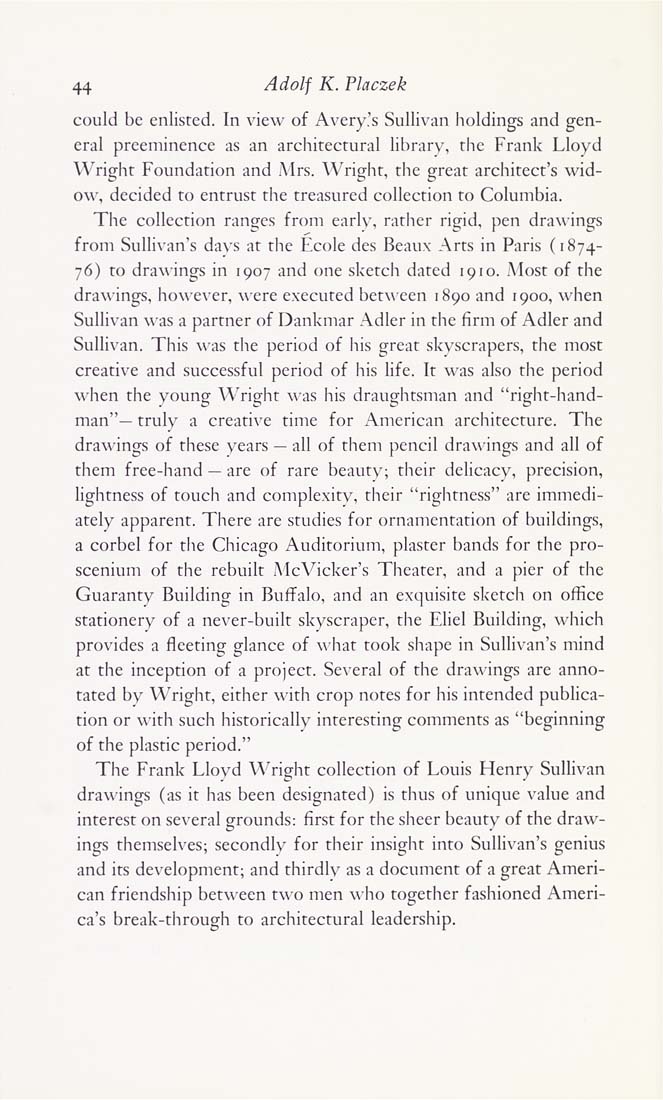Columbia Library columns (v.14(1964Nov-1965May))
(New York : Friends of the Columbia Libraries. )
|
||
|
|
|
|
| v.14,no.3(1965:May): Page 44 |

44 Adolf K. Placzek could be enlisted. In view of Avery.'s Sullivan holdings and gen¬ eral preeminence as an architectural library, the Frank Lloyd Wright Foundation and Mrs. Wright, the great architect's wid¬ ow, decided to entrust the treasured collection to Columbia. The collection ranges from early, rather rigid, pen drawings from Sullivan's days at the Ecole des Beaux Arts in Paris (1874- 76) to drawings in 1907 and one .sketch dated 1910. Most of the drawings, however, were executed between 1890 and 1900, when Sullivan was a partner of Dankmar Adler in the firm of Adler and Sullivan. This was the period of his great .skyscrapers, the most creative and successful period of his life. It was also the period when the young Wright was his draughtsman and "right-hand- man"— truly a creative time for American architecture. The drawings of these years — all of them pencil drawings and all of them free-hand — are of rare beauty; their delicacy, precision, lightness of touch and complexity, their "rightness" are immedi¬ ately apparent. There are studies for ornamentation of buildings, a corbel for the Chicago Auditorium, plaster bands for the pro¬ scenium of the rebuilt McVicker's Theater, and a pier of the Guaranty Building in Buffalo, and an exquisite sketch on office stationery of a never-built skyscraper, the Eliel Building, which provides a fleeting glance of what took shape in Sullivan's mind at the inception of a project. Several of the drawings are anno¬ tated by Wright, either with crop notes for his intended publica¬ tion or with such historically interesting comments as "beginning of the plastic period." The Frank Lloyd Wright collection of Louis Henry Sullivan drawings (as it has been designated) is thus of unique value and interest on se\-eral grounds; first for the sheer beauty of the draw¬ ings themselves; secondly for their insight into Sullivan's genius and its development; and thirdly as a document of a great Ameri¬ can friendship between two men who together fashioned Ameri¬ ca's break-through to architectural leadership. |
| v.14,no.3(1965:May): Page 44 |







